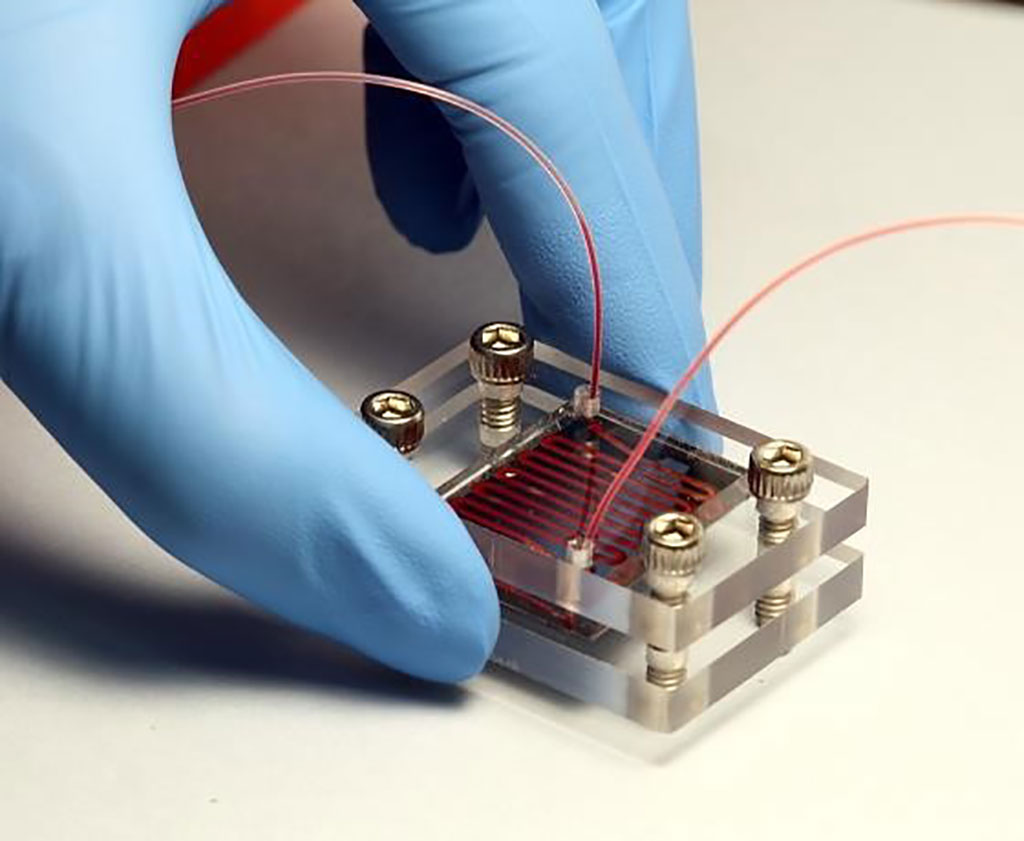NanoVelcro Cell Technology Applied in Diagnosis of Pregnancy Complications
By LabMedica International staff writers
Posted on 02 Sep 2021
Placenta accreta spectrum (PAS) disorders, including placenta accreta, placenta increta, and placenta percreta, are the consequences of abnormal implantation, or aberrant invasion and adherence of placental trophoblasts into the uterine myometrium.Posted on 02 Sep 2021
Current diagnostic modalities for PAS, including serum analytes, ultrasonography, and magnetic resonance imaging (MRI), are effective but not always conclusive, and some options are not readily available in low resource settings. Circulating trophoblast cell clusters can be used for early detection of PAS disorders.

Image: The NanoVelcro device has been used to detect placenta accreta spectrum (PAS) disorders (Photo courtesy of University of California, Los Angeles)
Medical Scientists at the University of California, Los Angeles (UCLA, Los Angeles, CA, USA) and their colleagues included in a study pregnant women aged from 18 to 45 years old with singleton intrauterine pregnancies, and gestational age (GA) between 6 and 40 weeks. The team analyzed blood samples from 168 pregnant individuals, divided between those with clinically confirmed PAS, placenta previa, or normal placentation and an additional 15 healthy non-pregnant female donors served as controls.
The investigators used the a cell isolation technology called NanoVelcro Chip developed by UCLA. NanoVelcro is a nanostructure-embedded microchip designed to capture and enrich specific target cells from a mixed sample. The samples were run through NanoVelcro Chips under optimized conditions and immunostained and were imaged using the Nikon Ni fluorescence microscope (Melville, NY, USA). Trophoblast-specific gene expression in placenta tissue was performed to validate the selected trophoblast-specific gene panel.
The team discovered a uniquely high prevalence of clustered circulating trophoblasts (cTB-clusters) in PAS and subsequently optimized the device to preserve the intactness of these clusters. The feasibility study on the enumeration of cTBs and cTB-clusters from 168 pregnant women demonstrates excellent diagnostic performance for distinguishing PAS from non-PAS. The combined cTB assay achieves an Area Under ROC Curve of 0.942 (throughout gestation) and 0.924 (early gestation) for distinguishing PAS from non-PAS. Overall, single cTBs are detected in the majority of pregnant women, with a detection rate of 98%, 85%, and 86% in the groups of PAS, placenta previa, and normal placentation, respectively.
Margareta D. Pisarska, MD, an Obstetrics and Gynecology Endocrinologist and co-author of the study, said, “In maternal health and delivery, we think of having a child and having a delivery as, overall a happy, healthy event. But in situations like this, these are very difficult times to try to manage through. And if we have a plan in place, schedule the delivery, have the right members on the team on board, have all the things prepared that should lead to a more scheduled controlled delivery.”
The authors concluded that the combination of cTBs and cTB-clusters captured on the NanoVelcro Chips for detecting PAS early in gestation will enable a promising quantitative assay to serve as a noninvasive test and also as a complement to ultrasonography to improve diagnostic accuracy for PAS early in gestation. The study was published on August 3, 2021 in the journal Nature Communications.
Related Links:
Nikon
University of California, Los Angeles







 Analyzer.jpg)





